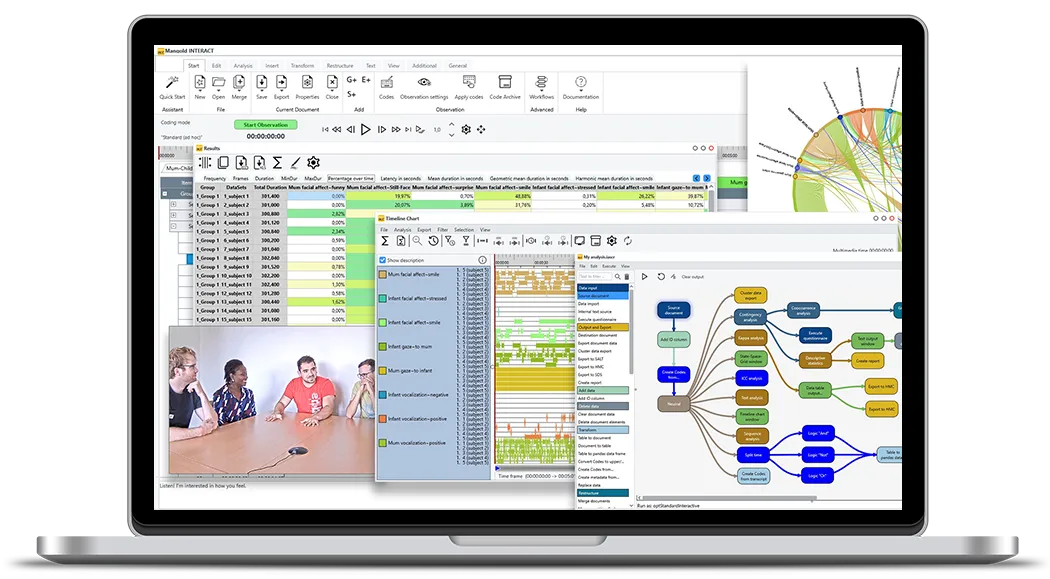Tutorial · 2 min read
Creating and Using a Coding System in INTERACT
Learn how to create an efficient hierarchical coding system in INTERACT, use Lexical Coding Mode, and perform statistical analysis on the resulting data.

Creating an effective coding system is crucial for successful behavioral research. This tutorial guides you through the process of building and implementing a smart, hierarchical coding system in Mangold INTERACT. Whether you’re analyzing teaching sessions, group meetings, or child play interactions, you’ll learn how to structure your codes efficiently and perform meaningful analysis.
What You’ll Learn
- Design a simplified and hierarchical coding system
- Implement code definition sets in INTERACT
- Master the Lexical Coding Mode for efficient data collection
- Perform statistical analysis using code combinations
- Utilize INTERACT’s “move and combine” feature for data aggregation
Video Tutorial
- 0:18 The initial situation
- 0:34 Simplifying the coding system
- 4:20 Create code definition sets in INTERACT
- 5:23 Live demonstration of INTERACT
- 5:26 How to use and chain the defined coding system
- 7:35 Lexical observation settings
- 7:56 Data collection in INTERACT
- 10:45 Statistics & Analysis
- 11:00 Timeline chart
- 11:20 Numerical results
- 11:42 INTERACT "move and combine" feature
- 12:34 Statistics & Analysis for aggregated codes
Tutorial Overview
The tutorial begins by addressing a common challenge in behavioral research: creating an efficient coding system. Starting with a complex initial structure, we demonstrate how to simplify and organize codes into logical hierarchies. This approach eliminates redundancy while maintaining analytical power.
A key concept introduced is the creation of mutually exclusive code classes. The tutorial shows how to transform traditional coding systems into streamlined hierarchical structures, making them both more manageable and more powerful. You’ll learn how to link different code classes together, creating sophisticated coding chains while keeping the system user-friendly.
The practical demonstration covers the implementation of the coding system in INTERACT, including setting up code definition sets and using the Lexical Coding Mode. This mode enables systematic data collection where each observation can be coded with multiple attributes in a structured sequence.
The final section focuses on data analysis, showcasing INTERACT’s powerful statistical capabilities. You’ll learn how to use the “move and combine” feature to aggregate codes and generate meaningful insights from your data while maintaining the flexibility to perform different types of analyses on the same dataset.
INTERACT: One Software for Your Entire Research Workflow
From data collection to analysis—including GSEQ integration—INTERACT has you covered.
